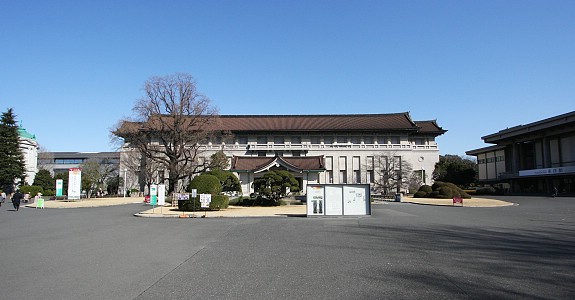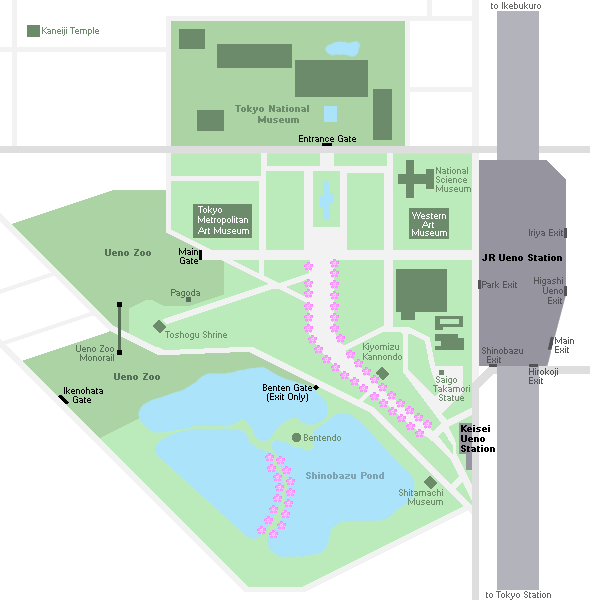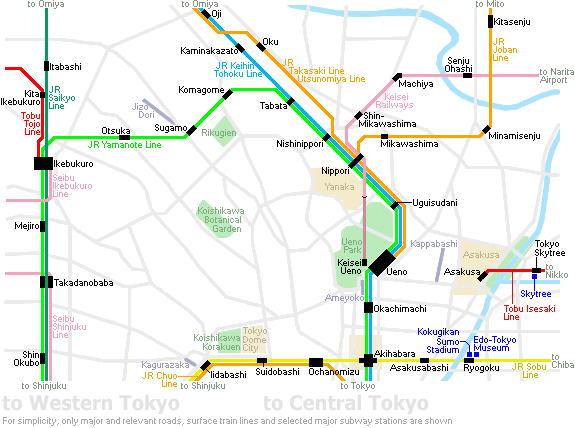
Ueno Park (上野公園, Ueno Kōen) is a large public park next to Ueno Station in central Tokyo. The park grounds were originally part of Kaneiji Temple, which used to be one of the city's largest and wealthiest temples and a family temple of the ruling Tokugawa clan during the Edo Period. Kaneiji stood in the northeast of the capital to protect the city from evil, much like Enryakuji Temple in Kyoto. During the Boshin Civil War, which followed the Meiji Restoration in 1868, Kaneiji suffered nearly complete destruction in a battle between the victorious forces of the new Meiji government and loyalists of the overthrown shogunate. After the battle, the temple grounds were converted into one of Japan's first Western style parks and opened to the public in 1873. A statue of Saigo Takamori, one of the generals in the Battle of Ueno, stands near the park's southern entrance. 
At the southwestern end of the park lies Shinobazu Pond, one of many reminders of Kaneiji Temple's former grandeur. The pond represents Lake Biwako (in a reference to Kaneiji's model, the Enryakuji Temple of Kyoto, which overlooks Lake Biwako). On an island in the middle of the pond stands Bentendo, a temple hall dedicated to the goddess of Benten. Today Ueno Park is famous for the many museums found on its grounds, especially the Tokyo National Museum, theNational Museum for Western Art, the Tokyo Metropolitan Art Museum and the National Science Museum. It is also home to Ueno Zoo, Japan's first zoological garden. Additionally, Ueno Park is one of Tokyo's most popular and lively cherry blossom spots with more than 1000 cherry trees lining its central pathway. The cherry blossoms are usually in bloom during late March and early April and attract large numbers of hanami (cherry blossom viewing) parties. 
|
